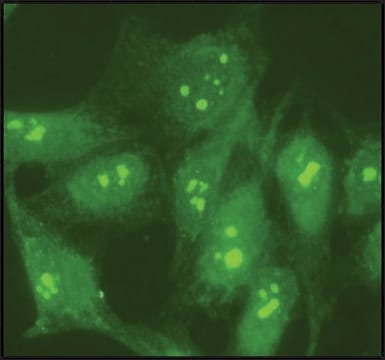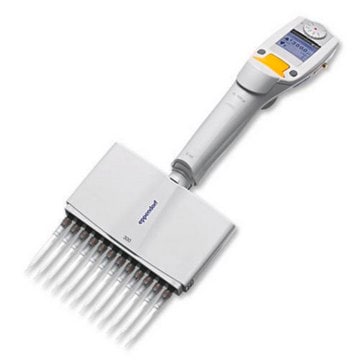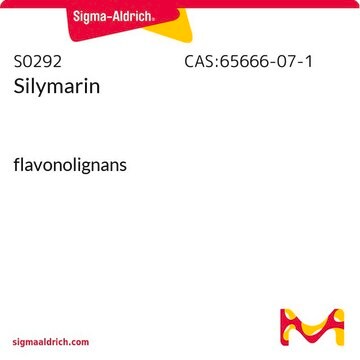N6288
Anti-Nucleolin−Atto 488 antibody produced in rabbit
1.5-3.0 mg/mL, affinity isolated antibody, buffered aqueous solution
Synonim(y):
Anti-NCL, Protein C23
About This Item
Polecane produkty
pochodzenie biologiczne
rabbit
białko sprzężone
Atto 488 conjugate
forma przeciwciała
affinity isolated antibody
rodzaj przeciwciała
primary antibodies
klon
polyclonal
Postać
buffered aqueous solution
reaktywność gatunkowa
human, mouse, rat
warunki przechowywania
protect from light
stężenie
1.5-3.0 mg/mL
metody
direct immunofluorescence: 0.5-1.0 μg/mL using human HeLa, rat NRK and mouse 3T3 cells
fluorescencja
λex 500 nm; λem 522 nm in PBS
λex 500 nm; λem 522 nm
numer dostępu UniProt
Warunki transportu
dry ice
temp. przechowywania
−20°C
docelowa modyfikacja potranslacyjna
unmodified
informacje o genach
human ... NCL(4691)
mouse ... Ncl(17975)
rat ... Ncl(25135)
Opis ogólny
Find more information here
Specyficzność
Immunogen
Zastosowanie
Działania biochem./fizjol.
Postać fizyczna
Przechowywanie i stabilność
Oświadczenie o zrzeczeniu się odpowiedzialności
Not finding the right product?
Try our Narzędzie selektora produktów.
produkt powiązany
Kod klasy składowania
10 - Combustible liquids
Klasa zagrożenia wodnego (WGK)
WGK 2
Temperatura zapłonu (°F)
Not applicable
Temperatura zapłonu (°C)
Not applicable
Środki ochrony indywidualnej
Eyeshields, Gloves, multi-purpose combination respirator cartridge (US)
Certyfikaty analizy (CoA)
Poszukaj Certyfikaty analizy (CoA), wpisując numer partii/serii produktów. Numery serii i partii można znaleźć na etykiecie produktu po słowach „seria” lub „partia”.
Masz już ten produkt?
Dokumenty związane z niedawno zakupionymi produktami zostały zamieszczone w Bibliotece dokumentów.
Produkty
Immunoblotting (Western blot transfer) is a common technique in modern proteomics research.
Nasz zespół naukowców ma doświadczenie we wszystkich obszarach badań, w tym w naukach przyrodniczych, materiałoznawstwie, syntezie chemicznej, chromatografii, analityce i wielu innych dziedzinach.
Skontaktuj się z zespołem ds. pomocy technicznej







